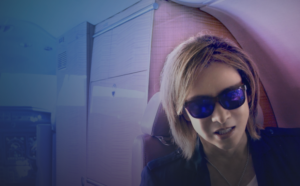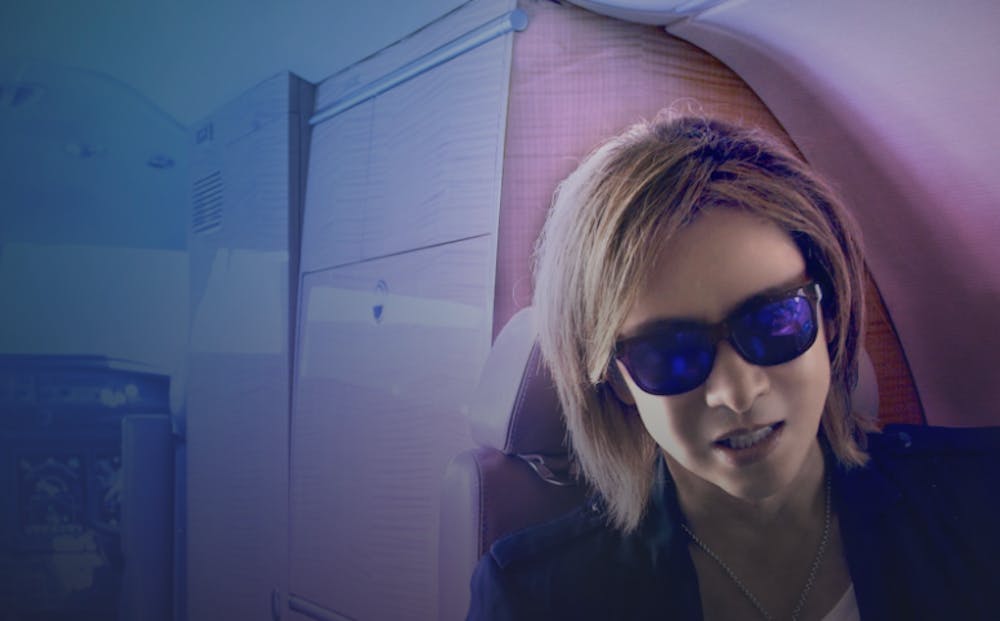By Julia Duggan
Senior Staff Writer
“My Music Story: Yoshiki’ is a documentary where Japanese musician Yoshiki tells his story and connects it to Disney songs. The theme of this documentary connects with audiences of all ages, especially during a pandemic — when surrounded by sadness and anger, one just has to keep moving forward.

Yoshiki grew up in Japan and has become a world class musician. He is a pianist, a drummer, the leader for the band X Japan, and a composer. In 2005 Yoshiki composed and conducted the orchestra for the World Expo. In addition he wrote the theme song for The Golden Globes in 2012. X Japan has sold over 30 million copies of singles and records. Also, the band holds the record for the number of times for selling out concert spaces in Japan. The group has also sold out Carnegie Hall.
The documentary begins by showing how they set up the room where the performances happen. The piano was set up, the lights were checked, cameras set up, string players arrived and then Yoshiki entered the room once everyone was in place.
One of the instruments Yoshiki uses is extremely unique and adds to the music. Yoshiki performs on an almost completely transparent grand piano. It is quite common to see all-black or all-white pianos, but never one that is translucent. All of the hammers located in the piano are visible, and how surprising the mechanics are for playing a note. Having a translucent piano playing Disney music only added to the mysterious and magical aesthetic of the set. The lights shine through this piano, which illuminates all the mechanisms and only makes the performances more captivating. This set had a mix of blue and white lights, which enhanced the magical feeling.
Yoshiki starts his tale at the very beginning. When he was four, his parents bought him a piano, and his passion for music grew from there. Early in his life, Yoshiki’s father took his own life, which caused Yoshiki to look at the world with sadness and anger. At one point, Yoshiki compares the emotional pain of losing someone to a scar. If it is physical, eventually a scab will form, and it will heal. If it is emotional, one must deal with it continuing to bleed for one’s entire life.
Due to his anger, Yoshiki became fascinated with rock and punk. Eventually his love for punk inspired him to create a band called X. The band later renamed itself to X Japan and produced two international hits. Yoshiki performed on the drums for this band. He fell in love with drums from listening to rock and punk music. All of his skills on the drums came from his sheer determination to improve his craft, as he is self taught.
The connection to Disney songs is brilliant. Yoshiki arranged two famous Disney songs for piano, two violins, one viola and one cello. The songs performed were “Can You Feel the Love Tonight?” from “The Lion King”and “Let it Go” from “Frozen.” An arrangement is when someone takes a published song and writes it again for a different number of instruments or for a different style.
Throughout the documentary, viewers can see the rehearsal process and then the actual performances. The songs Yoshiki arranged reflect his life as it is full of excitement and sadness. What is even more striking is that one can hear the beauty and the sadness in both arrangements.
The song “Can You Feel the Love Tonight?,” originally written by Elton John, is played when the two protagonists Simba and Nala fall in love. Yoshiki’s version captured the feeling of the beginning of a relationship through the piano. He also added another element to the music by using the strings. The strings add an element of longing which can be inferred as sadness when remembering a relationship that did not last.
Yoshiki’s rendition of “Let it Go” adds a new layer of hope and inspiration to the music. The strings part that Yoshiki added in the melody represents all the baggage that is weighing the speaker down. The piano part has the melody and creates a beautiful contrast with the sadness from the strings. It suggests that while times may be hard, it is okay to release those emotions and just be yourself.
This documentary is a masterpiece for capturing the life of Yoshiki and showing him in his most common and comfortable elements. However, there is one thing that should be fixed, and it is right at the end of the documentary. Right before the credits roll, a statement is made that if you sit through the credits you will see the full performances of the arrangements. I sat through all of the credits and the documentary ended without showing the arrangements. Just to make sure there was not a glitch on my end, I went back and watched the credits again, smiling at how even the piano tuner is named in the credits. Sadly, I had to scour the internet to find the arrangements.
http://www.youtube.com/watch?v=G9QXEVmv82Q
Overall, this documentary is incredible. While the set is minor, the story is told in the most captivating way. It is a story of love, anger, sadness and sheer determination. The story is shaped around Yoshiki’s love for music and how he is determined to continue to push himself as a musician.







